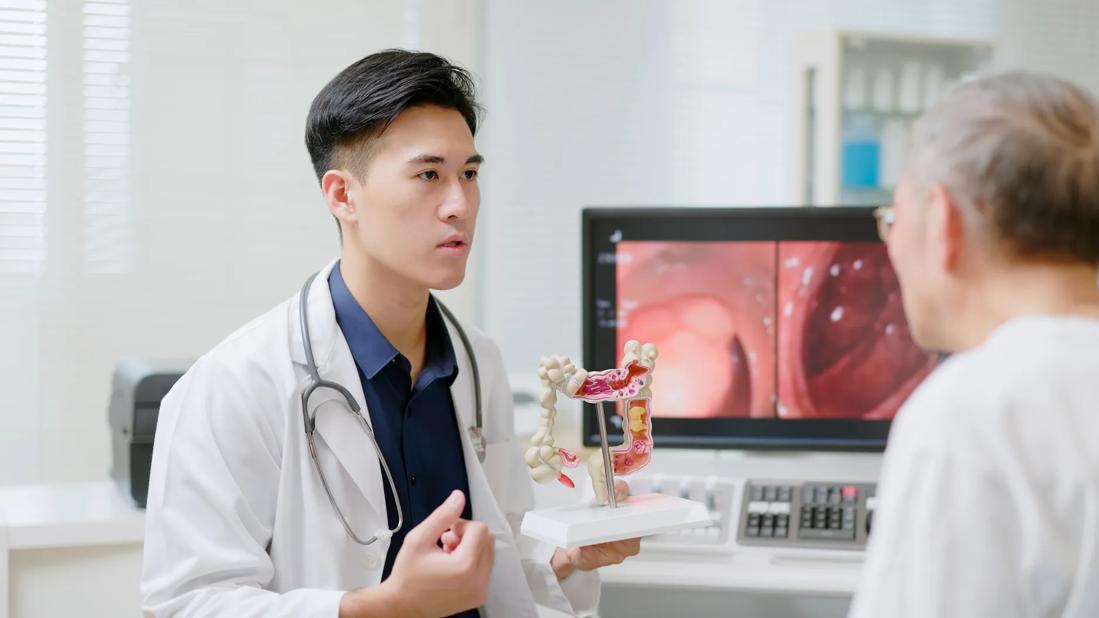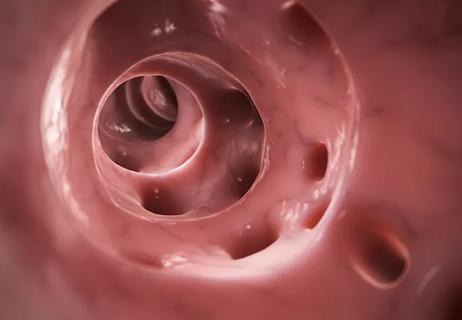Tips on how to recognize the condition and budesonide treatment guidance

Written by Katherine E. Westbrook, DO, and Ari Garber, MD, EdD, MS, EdM
Advertisement
Cleveland Clinic is a non-profit academic medical center. Advertising on our site helps support our mission. We do not endorse non-Cleveland Clinic products or services. Policy
Note: This article is a slightly abridged version of a review first published in Cleveland Clinic Journal of Medicine (2024;91(4):215-2166). A full version of the open-access article is available here.
Microscopic colitis, an inflammatory disorder characterized by chronic diarrhea, is so named because its diagnosis requires histologic evaluation with mucosal biopsy. It may be overlooked as a cause of chronic diarrhea because cross-sectional imaging and endoscopic evaluation are usually normal in the absence of a microscopic evaluation. A standard approach to therapy improves symptoms and quality of life.
Microscopic colitis has two subtypes: the collagenous subtype features the development of a subepithelial collagen band, and the lymphocytic subtype is characterized by intraepithelial lymphocytosis.1
The quintessential clinical presentation, regardless of the subtype, is chronic, non-bloody, watery diarrhea with concomitant urgency, abdominal pain and weight loss. Likely causes are multifactorial and include the following:
Because the clinical presentation of microscopic colitis often overlaps with other diagnoses such as celiac disease and irritable bowel syndrome, competing diagnoses should be excluded.2 The diagnosis of microscopic colitis can be confirmed with colonoscopy with biopsy of the ascending and descending colon.
Advertisement
Despite the inflammatory nature of microscopic colitis, there is little benefit to obtaining C-reactive protein and erythrocyte sedimentation rate values, as neither is elevated in most cases of microscopic colitis.4
A recent meta-analysis determined the worldwide incidence of microscopic colitis to be about five per 100,000 patient-years, with a female predominance.2 Although microscopic colitis occurs at all ages, it is more common in patients older than 60.
First-line therapy for microscopic colitis, regardless of the subtype, is budesonide 9 mg/day for eight weeks.5 If the patient is symptom-free after eight weeks, budesonide therapy can be stopped. If the patient remains symptomatic at the end of eight weeks or if symptoms recur, then budesonide can be continued or resumed at the lowest effective dose, usually 6 mg/day or less, for six to 12 months.2
Patients should be advised to avoid smoking and using nonsteroidal anti-inflammatory drugs. If possible, they should discontinue all associated medications, including proton pump inhibitors, statins, aspirin, immune checkpoint inhibitors and selective serotonin reuptake inhibitors.3
When budesonide therapy is unfeasible or ineffective, other treatment options include secondary medications such as the bile acid sequestrant cholestyramine, loperamide or bismuth salicylate, all with varying degrees of efficacy.4,5 Some authors note that starting loperamide with budesonide might augment symptomatic relief, but few studies suggest that this combination is superior to budesonide alone.4,5
Advertisement
Some evidence supports the use of immunomodulators, including azathioprine and mercaptopurine, in the treatment of microscopic colitis.2,6 Biologic therapies such as antitumor necrosis factor agents infliximab or adalimumab or the anti-integrin antibody agent vedolizumab have shown some success.2 Data are emerging regarding Janus kinase inhibitors for treating microscopic colitis, but to date their efficacy is uncertain.2 Mesalamine compounds have not proven effective. The American Gastroenterological Association Institute guideline5 recommends mesalamine as a potential alternative to budesonide, but the European guidelines7 do not.
Studies of probiotics have also generated little evidence to support their use in mitigating microscopic colitis.5 The Institute guideline and other authors recommend against the use of probiotics for microscopic colitis.4,5
With effective treatment, symptoms and quality of life improve with microscopic colitis. Predictions of sustained remission vary widely among studies.1 Although remission occurs for many patients, in most, the typical disease course is chronic or relapsing.8
As a general rule, continued budesonide therapy may be indicated for patients who are not in remission after six to 12 months.8 Unlike ulcerative colitis and Crohn's disease, which carry a longitudinal risk of colorectal cancer, microscopic colitis carries no such increased risk. The goal of continued treatment is clinical (i.e., symptomatic) remission.
References
Advertisement
Advertisement

Poor response may be due to different tumor biology

Study sheds light on distant metastasis rates between upfront surgery and Watch & Wait strategies

Findings could help promote organ preservation

Input from specialists and other healthcare providers is important when discussing quality-of-life improvement options

The retrospective study also identified predictors for which patients would likely achieve a complete response from TNT

Key points highlight the critical role of surveillance, as well as opportunities for further advancement in genetic counseling

Study reveals key differences between antibiotics, but treatment decisions should still consider patient factors

Potentially cost-effective addition to standard GERD management in post-transplant patients